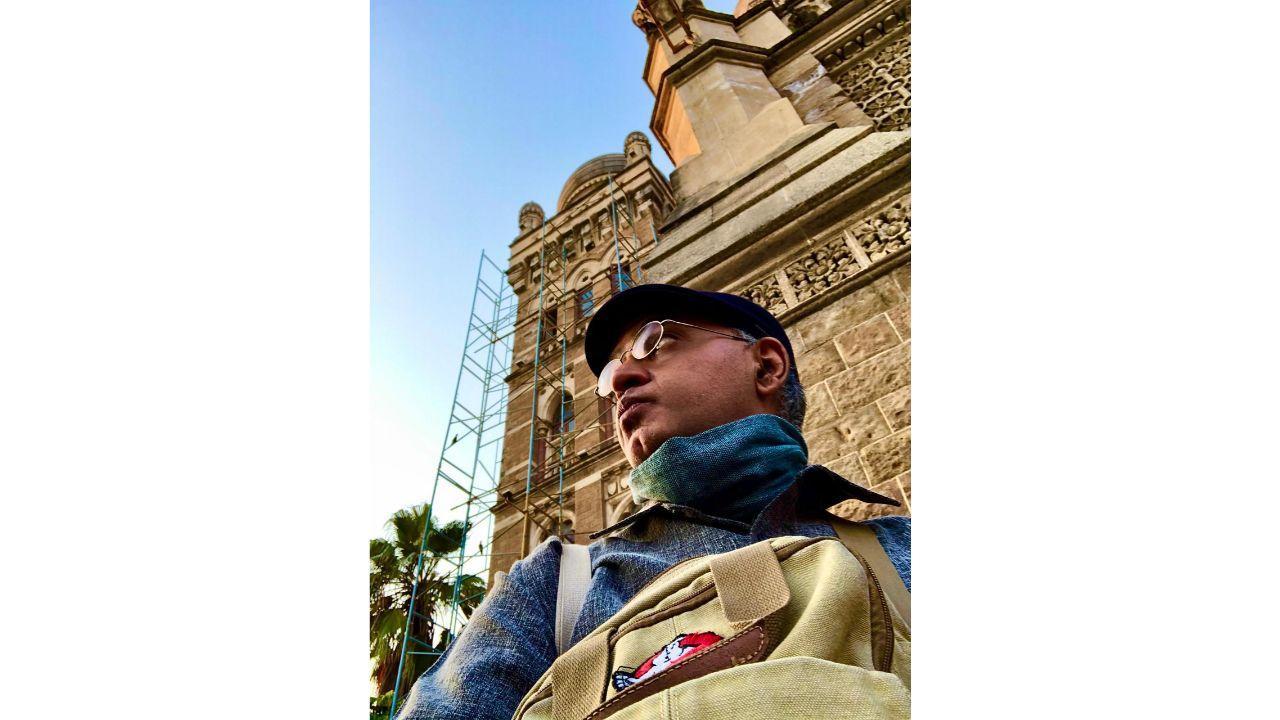Tracing the history of Maharashtra Day to the Samyukta Maharashtra Movement, Dr Krishnan talks about the significance of the formation of the state on Labour Day

City-based historian and heritage consultant Dr Shekhar Krishnan Photo: Dr Shekhar Krishnan
The state of Maharashtra celebrates May 1 as Maharashtra Day to commemorate its declaration as an independent state on May 1, 1960. While most people enjoy a holiday, there are few people apart from history enthusiasts who know about the history and the significance of the day which goes back to the early post-Independence era.
On the eve of the annual celebration, city-based historian Dr Shekhar Krishnan takes us down memory lane with a lesson in history about the Samyukta Maharashtra Movement. He says, “It is called Maharashtra Divas because May 1 is Labour Day around the world and it was the mill workers and the masses who led the movement. It was specifically named Maharashtra Day to identify with a worker’s movement and not as a linguistic movement.”
Krishnan says it all started in the 1950s after the independence of India, when there was a need for linguistic states because till then India was divided into different presidencies. The historian explains, “There was a demand for linguistic states because there were big states like the Bombay Presidency and Madras Presidency created by the British, which did not have any logic to them, it was only how they wanted to administer things.” Krishnan, who is a heritage consultant with the Brihanmumbai Municipal Corporation (BMC) adds that in the 1950s, the first movement came about in south of India with the creation of Tamil Nadu and Andhra Pradesh based on Tamil and Telugu language speakers. However, in places like Chennai and Mumbai, which were called Madras and Bombay at the time, there were people who spoke many other languages besides Tamil and Marathi.
“The real issue was that in these cities there were mixed population and the idea of creating only a linguistic state was very controversial in many quarters. The very first state that was created as a linguistic state was Andhra Pradesh for Telugu speakers, which ironically doesn’t exist anymore,” he informs.
After this demand was conceded by Pandit Jawaharlal Nehru, it also led to the formation of the States Reorganisation Act in 1956, which was put into place to reorganise the boundaries of states based on linguistic lines. Talking about the Act, Krishnan says it was recommended that most states should be reorganised on a linguistic basis but they put in an exception for Bombay. For those who don’t know, he elaborates, “At the time, Bombay was Maharashtra, Gujarat, parts of Karnataka and northern part of Kerala and what is today in Madhya Pradesh. It was all over the place. Even Nagpur and Vidarbha were not part of the Bombay state. Before independence, it included Sindh in Pakistan. It was a gigantic region - where the whole west coast from Karachi in Pakistan all the way down to Kerala was one big state.”
Interestingly, the historian notes that Mahatma Gandhi and Nehru had already organised the Congress party based on linguistic states. “They had a Maharashtra Pradesh Congress Committee, Tamil Nadu Congress Committee before these states came into existence because the Congress party thought that the best way to reach the message to the people was in their own language,” he adds.
However, not many people approved of the special preference being given to Mumbai, as Nehru suggested it should be a Union Territory, the idea of which was supported by the business class in the region. So, there was a constant demand by Marathi people, who were primarily working-class people, mill workers and domestic servants in the city at the time, that it should become the capital of Maharashtra.
He continues, “This was more of an economic question - the workers should have a right and a democracy to have a voice in the politics and it became a broad issue.” So, when in 1956 the report came out to keep Bombay as a separate city and create a separate Gujarat and Maharashtra, people took to the streets to oppose it and there was violence and police firing and today in History books it is referred to as the Battle of Bombay, 1956.
This movement, which was led by the trade unions, was no more a language issue but an economic one and that is why they further pushed for Mumbai to become the capital of Maharashtra. However, the industrialists believed that since the city is a cosmopolitan, it doesn’t belong to the Marathi people. But, the word in itself had a very upper crust elite sound to it, says Krishnan, who highlights that it was the likes of Prabodhankar Thackeray as well as a lot of the trade unionists and others, who united to fight it.
He explains, “They all demanded that we have the linguistic state of Maharashtra with Mumbai as its capital. It was fought out in the streets and a lot of the roads today such as the Acharya Atre Chowk and Senapati Bapat Marg were really the names of the leaders of the movement and cannot be classified as left-wing or right-wing or parochial. A lot of people who don’t understand Marathi cultural history today insist on calling the city Bombay thinking that it is more liberal and cosmopolitan but in fact it is very elitist’
The formation of the Bombay Reorganisation Act took place on April 25, 1960, thanks to the efforts of the Samyukta Maharashtra Movement, who pursued their goal for four years. The act led to the formation of separate states of Maharashtra and Gujarat. With this, Mumbai was also named the capital of Maharashtra and it came into effect on May 1, 1960.
 Subscribe today by clicking the link and stay updated with the latest news!" Click here!
Subscribe today by clicking the link and stay updated with the latest news!" Click here!










